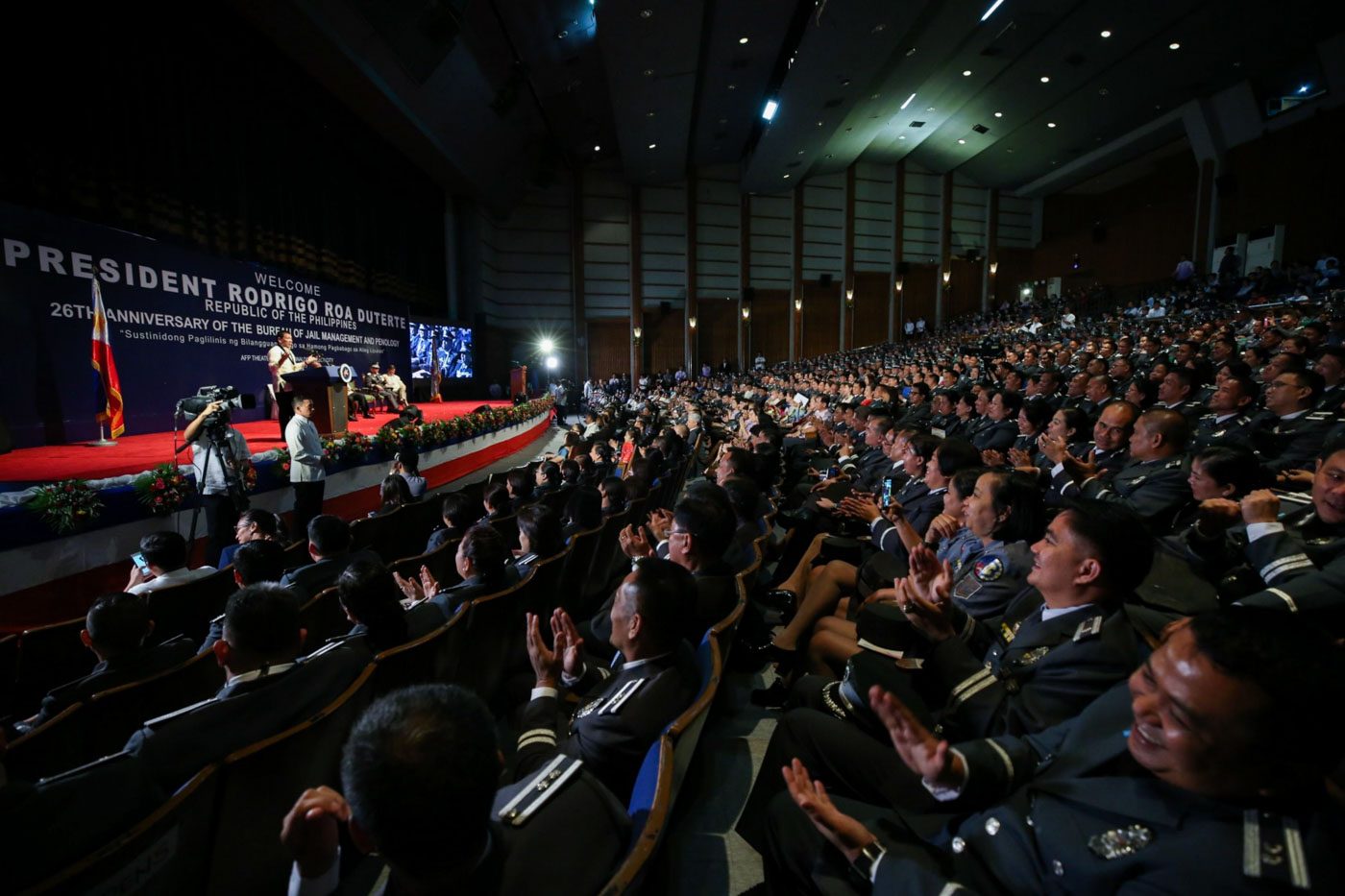SUMMARY
This is AI generated summarization, which may have errors. For context, always refer to the full article.

MANILA, Philippines – Philippine jails are overcrowded, and this is seen to worsen as government estimates nearly half a million inmates 5 years from now.
This is the story that numbers tell in the July 2017 data released by the Bureau of Jail Management and Penology (BJMP) in celebration of its 26th anniversary on Wednesday, July 12.
The BJMP is already guarding 143,367 inmates, exceeding the 20,773 capacity of all of its 466 jails.
This means that its jails are now bursting by 589% on average, even higher than the 511% congestion rate that the Commission on Audit (COA) recorded in 2016.

The most crowded Philippine jail is the Pulilan Municipal Jail. It houses 159 despite being built only for 4 prisoners.
On top of having too many inmates, the BJMP has too few guards – just 11,721.
Each BJMP officer oversees 63 prisoners, far from ideally watching only 7 each. (READ: Overcrowding in PH prisons: Is tech the solution?)
President Rodrigo Duterte’s campaign against illegal drugs primarily contributed to the 60.94% spike in the inmate count, as 71% of the inmates taken in by the BJMP have been detained for drugs.

Judging the rate of apprehension overwhelming acquittal, the BJMP estimated that there would be 417,408 inmates by 2022.
Government response
The government has tried to fix overcrowding.
To fast-track the dismissal of cases, the BJMP had implemented a paralegal training program which gave at least 400 BJMP paralegals access to law archives and BJMP manuals, leading to the quick release of 61,916 inmates from 2016 to the first quarter of 2017.
The Supreme Court had ordered 240 courts to handle drug cases to back this up.
In a bid to address both jail congestion and drug addiction, the government has put up a “mega” drug rehab center in Nueva Ecija which promised to accommodate 10,000 at a time. But it was later shown that only 500 patients could be admitted.
To make prison conditions more bearable, the BJMP has been partnering with the Technical Education and Skills Development Authority (TESDA) to provide vocational training to some 129,550 inmates in the past year.
Each prisoner’s subsistence allowance also increased from P50 to P60, and the medicine allowance doubled from P5 to P10 each day under the Duterte administration.
The BJMP is hoping to more than double its budget from P11.6 billion in 2017 to P24 billion in 2018. – Rappler.com
Add a comment
How does this make you feel?
There are no comments yet. Add your comment to start the conversation.